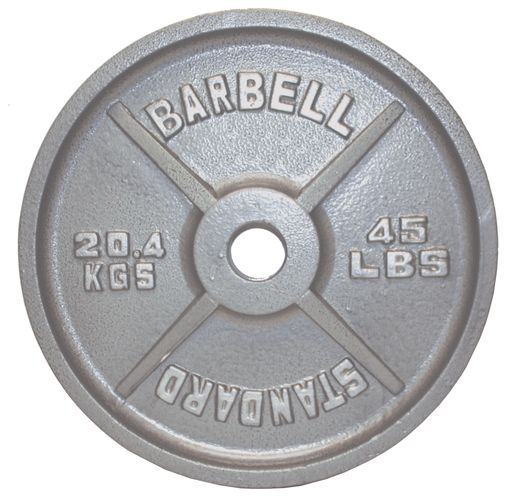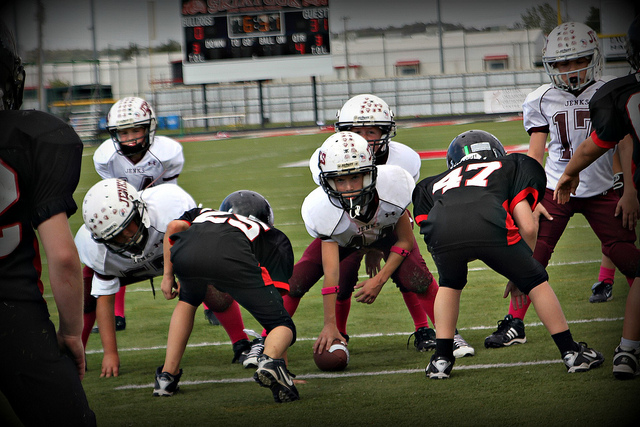Off-season workouts should be hard. If they are not hard, then players will not maximize their physical or mental performance. When a game gets mentally or physically difficult does your training prepare them for this or will they be in uncharted waters? Even though I try to make almost all (see Week 5 below) off-season workouts hard, in every six week cycle we make them very hard.
According to USA Track & Field, a “change-up week” should be programmed every four to six weeks. The purpose of a “change-up week” is to shock the nervous system and to give it stimuli that the body is not used to. When the body has to react and recover from something novel it is going to come back stronger but there are some limitations to this logic. If the athletes are always doing new things, then there is not going to be time for the athletes to adapt or get good at anything by consistently practicing it over and over again. For my programming, we follow the following six week cycles:
WEEK 1: Heavy Core Lifts, Isometric Prehab, Isometric Functional Lifts
WEEK 2: Heavy Core Lifts, Eccentric Prehab, Eccentric Functional Lifts
WEEK 3: Heavy Core Lifts, Myotatic Prehab, Myotatic Functional Lifts
WEEK 4: Heavy Core Lifts, Regular Prehab, Dynamic Functional Lifts
WEEK 5: Slow Down Week
I program a “Slow Down Week” where quality is more important than quantity. I reduce the number of exercises, give a lot of rest time, try to perfect technique, and the athletes try to lift the heaviest weights possible on each exercise. This is the only week that is not tiring.
Other programs would use this week as a deloading week. For high school programs, I do not schedule deloading weeks because the kids get their deloading when they go on vacation, over Thanksgiving break, over three day weekends, etc.
WEEK 6: Change-Up Week
If you look at the way I have programmed the first five weeks, we do a lot of heavy lifting. Because of that, our Change-Up Week consists of a lot of endurance training. If we did a lot of endurance training from weeks one through five, then the change-up week would need to consist of heavy lifting to shock the system.
When programming a Change-Up Workout, I want the workout to be…
- Very difficult but able to be completed by most of the athletes.
- Mentally strenuous where doubt creeps into their minds.
- Very competitive with winners and losers.
- Able to be quantified so they can talk trash to each other.
- Competitive against themselves and I want them to try to beat their previous times, reps, or scores.
- Uplifting where at the end they can say, “I can’t believe I did that.”
- Enlightening so they know they can push themselves harder in the future.
- So outrageous that they can brag about something they did to their parents and friends.
- Different than what they are used to so it breaks up the monotony.
- Safe so that the workout does not negatively impact future workouts.
- Unscientific where rest times, percentages, and other modes of programming are not considered.
WORKOUT: PLATES & 100s
Workout Logistics:
- Each player gets one heavy plate
- Players will start the workout with 1-1 Ratio 100s. I usually do four of them.
- For each round of exercises, players will do eight exercises for 45 seconds each with 15 seconds rest.
- After each round, they will run four more 1-1 Ratio 100s.
- They will then do the next round of exercises.
- We repeat the pattern and finish with 1-1 Ratio 100s.
- I give them a couple minutes break after each round.
- When the workout is completed, they will have run 20, 100s and performed 32 different exercises.
Workout Schedule:
- 10 minute warm-up
- 60 minutes for the workout
- 10 minutes for water breaks
- 10 minutes for flexibility
Example Exercise List:
WORKOUT: MAXIMUM LAPS & REPS
Workout Logistics:
- Print papers with the exercises that will be performed at each corner and place a paper in each corner of the track.
- The athletes will run 100 meters, do the exercises for that spot, and then run to the next spot.
- They will keep traveling from one paper to the next for the entire time.
- The athletes get 60 minutes to finish as many laps as possible.
- For the exercise list below and if the athletes finish 10 laps, they will have run 2.5 miles and done 1,600 body weight reps.
Workout Schedule:
- 10 minutes for warm-up
- 60 minutes for the workout
- 20 minutes for flexibility
Example Exercise List:
WORKOUT: MAXIMUM REPS
Workout Logistics:
- Players will be organized into groups of three.
- I like to make the groups athletically even and this is possible if you pick weights that all of the kids can do. The goal of the workout is to do maximum reps so if you are going to make a mistake, pick too light of weights.
- For each round, the groups will get five minutes to do as many reps as possible.
- Each player lifts until failure, then the next person goes, etc.
- The players in each group keep repeating that pattern for the entire five minutes.
- The group will keep a total count for the entire group to determine a winner for each round.
Workout Schedule:
- 10 minutes for warm-up
- 70 minutes for the workout
- 10 minutes for flexibility
Example Exercise List:
WORKOUT: 1,000 REPS
Workout Logistics:
- Athletes will run around the track and as far as they can in 20 minutes. There will be a winner for this event.
- At the end of 20 minutes, they will take a break
- They will then have 30 minutes to try to finish all 1,000 reps.
- The athletes can break up the exercises however they want. They can do each exercise 1 time for 100 reps and then move on to the next or they could do 25 reps for each exercise and repeat four times. I let them pick how they want to try to finish.
Workout Schedule:
- 15 minutes for warm-up
- 20 minute run
- 5 minutes for water break
- 30 minutes to try to finish the 1,000 reps
- 20 minutes for Yoga
Example Exercise List:
WORKOUT: CONTINUOUS 100s
Workout Logistics:
- Athletes will run repeat 100 yards
- Skill players get 16 seconds to finish and Bigs get 20 seconds to finish each run.
- To make it easy on me, I give everyone 20 seconds rest and then they start again.
- The athletes will keep going until they miss two in a row.
- The last man standing for each group is the winner. The best score by any player I have coached was a player from Malone University named Brandon Commodore. He did 60 in a row!!!
SCHEDULING CONSIDERATIONS
When deciding on which workouts to pick I try to use the following thoughts…
- I usually have the off-season athletes three days a week so I need to pick things that make sense for what they are prepared for.
- Even though the workout should be very hard, the athletes should have a chance to finish it. I do not want players dropping out halfway through the workout.
- At different points of the year, I pick different workouts. For football teams, I do more lifting based workouts in the winter because of weather and because they do not have a great conditioning base. During the spring and summer, I pick more running based exercises. For basketball, I pick a lot of running type exercises at the end of the fall to show them that they are prepared to go hard every play during a basketball game.
- Please do not do things that can hurt your players or you can get in trouble for. The point of this is not to show your athletes how diabolical you are. In some cases, the purpose of the workout is to show them that they need to work harder and in other cases to make them realize how much better they are.
- I try to get the kids outside because we need the space for the number of athletes and so they can spread out.
If you are interested in learning more you can go to the resources page on my website (https://exceleratead.com/training-theory) to find my FREE and moderately priced CoachTube Courses, Coaches Choice Videos, and a variety of other training articles and resources. My contact information is on my website so please feel free to email me with any questions.




